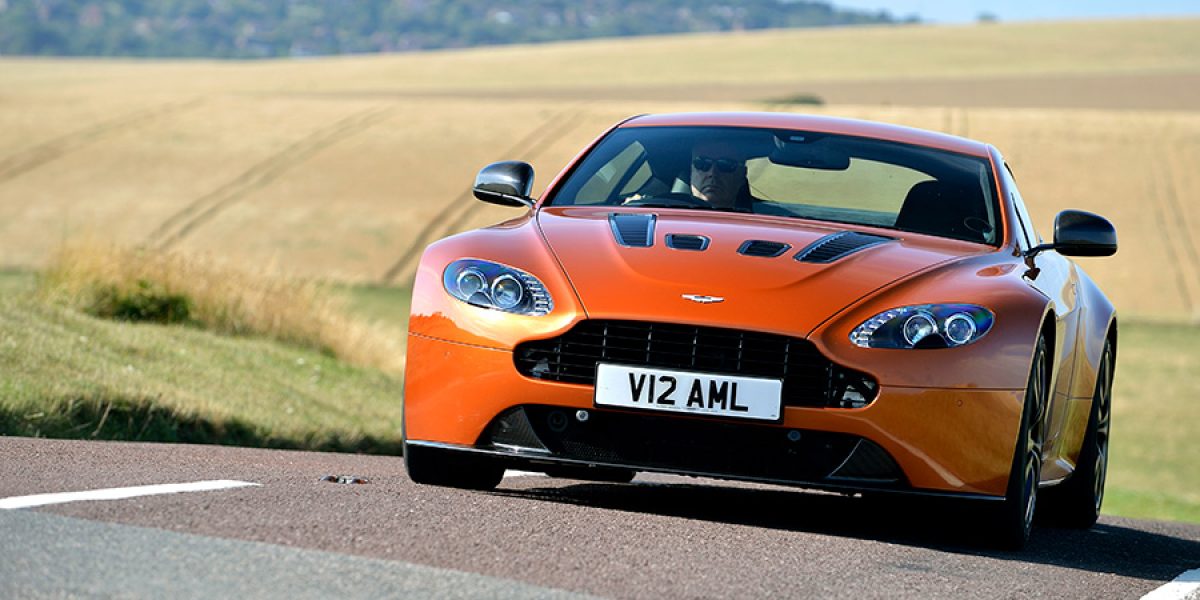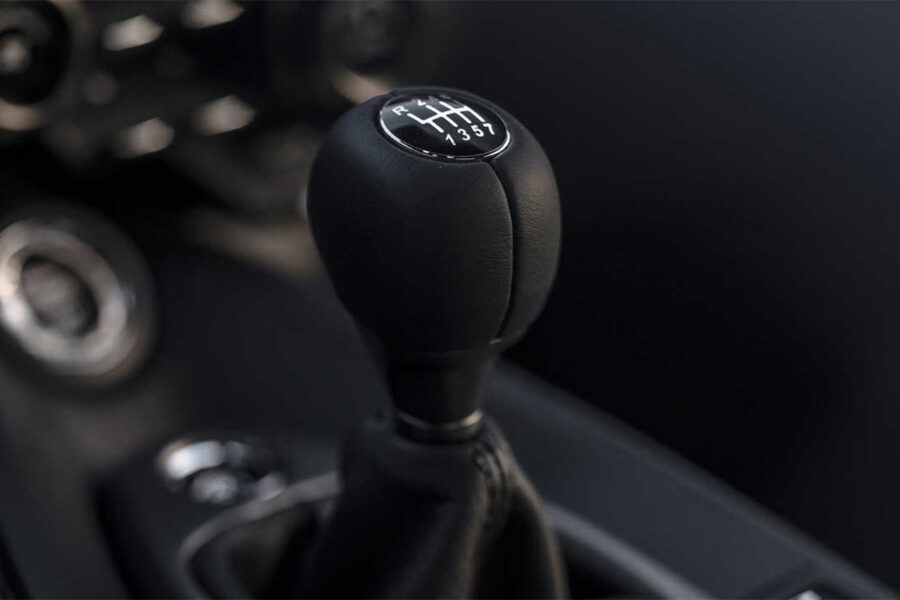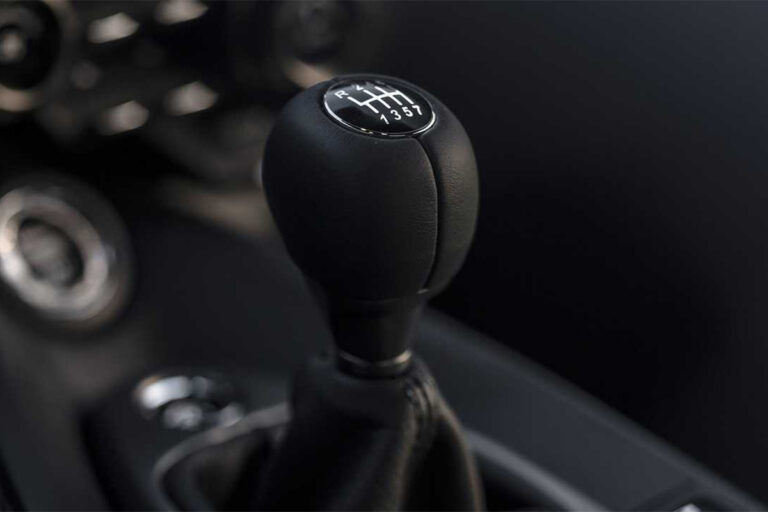The V12 Vantage 6-speed is a gorgeous highly prized collector car. Originally 1000 units were to be made, but by the end of production, 1199 were delivered. While rare, because the similar V8 Vantage numbered higher that 22,000, only the trained eye would be able to spot the subtle differences. The VH platform on which this car was built also underpinned the One-77, the DB9, the DBS and of course the Vantage V8.
Prices for the DBS have leaped during the pandemic outpacing many other cars. The V12 hasn’t enjoyed the same bump, but it has been holding its own. Now that Aston Martin has announced the end of the manual transmission, these cars will become part of Aston’s storied history.
Aston Martin V12 Vantage Exterior
The trademark Aston grille sits low up front that curves outwards to a wide-arched front with pronounced wheel well arches. The side strakes meld into the deep door creases before widening again to the rear wheel arches. The rear decklid tail flares higher than other Vantage models. On the back side, two single pipes sit flush with the rear diffuser.

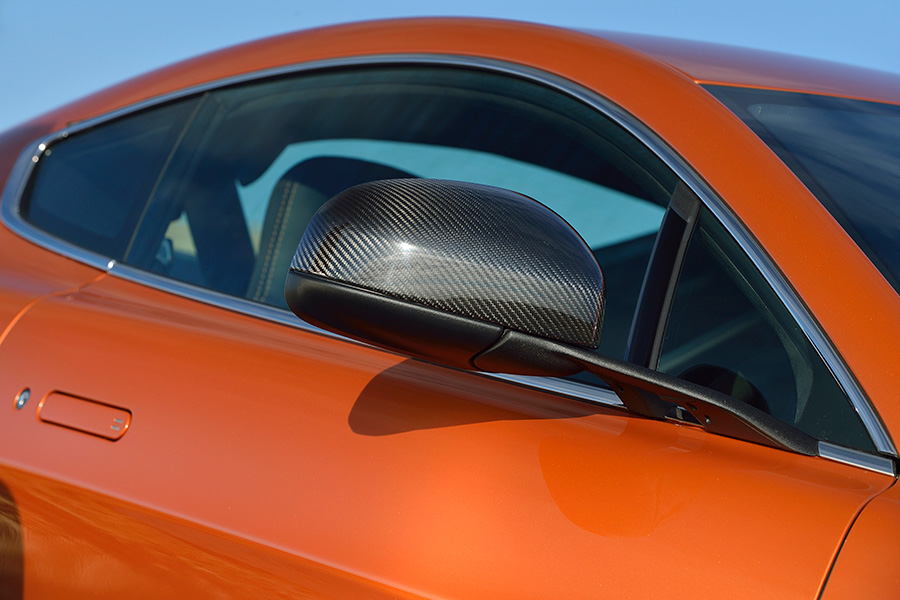
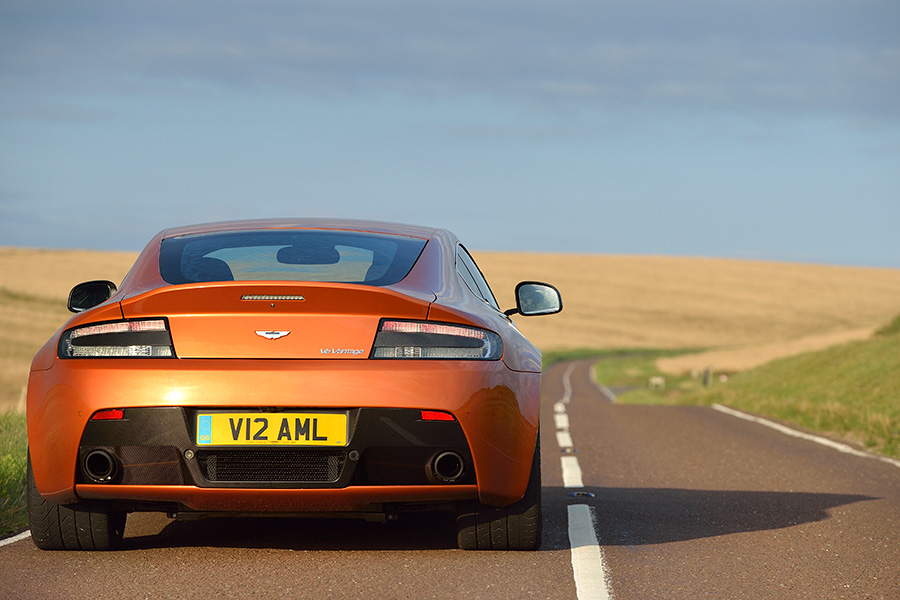
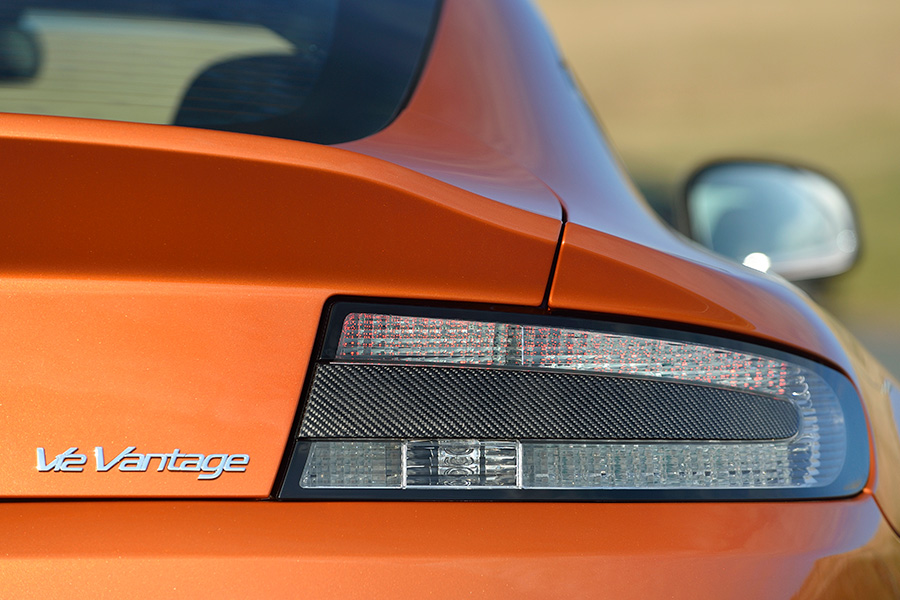
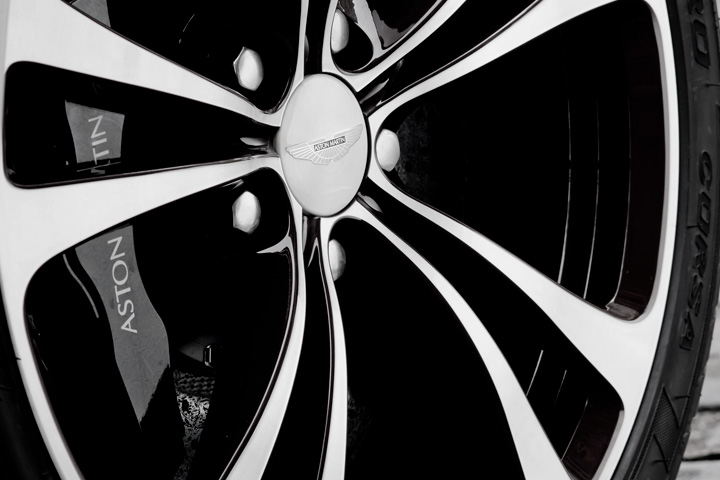
The V12 uses a carbon fiber hood to reduce weight up front and a taller duck tail in back to increase downforce. Carbon fiber is used on the front splitter, hood vents, side strakes, mirror caps, and rear diffuser. Diamond turned wheels shod 19” tires with 9” up front and 11” at back.
Carbon ceramic brakes fill the wheel wells with six and four piston calipers handling stopping duties.
Aston Martin has always been about performance oriented luxury. The design of their cars rely on the Golden Ratio of proportions and the highest quality materials to achieve a superb elegance. In 2006, a survey by Car Design News whose subscribers consist of industry designers and students voted the Vantage V8 as the best car design of the year. There is no bad angle on this car, inside or out.
Aston Martin V12 Vantage Interior
The interior of the V12 is nearly identical across the Vantage product line. While it’s disappointing the V12 doesn’t have more exclusive bits for the interior, it’s still a very posh experience. (Shown is the European version with sport seats unfortunately not available in the US and further reduces weight by 27 pounds per pair).
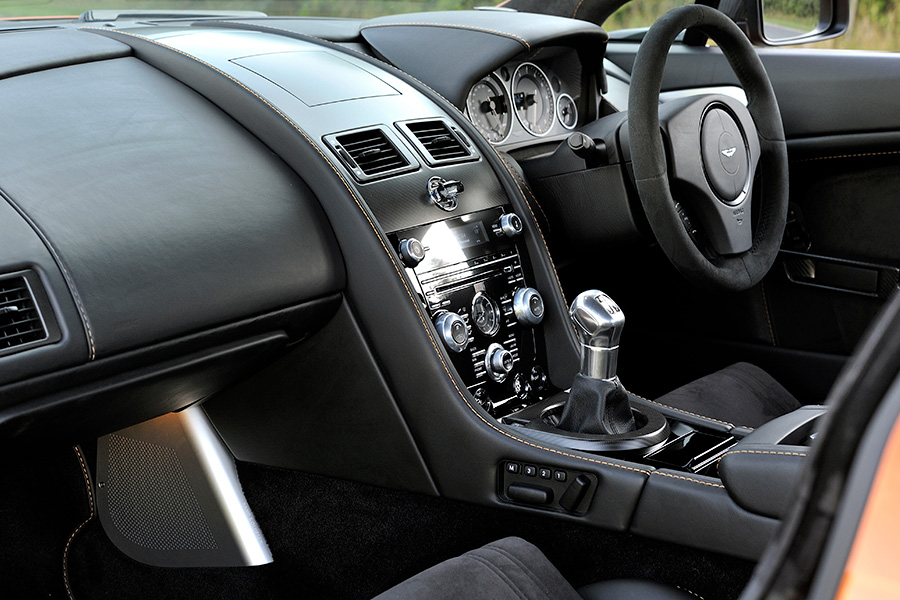
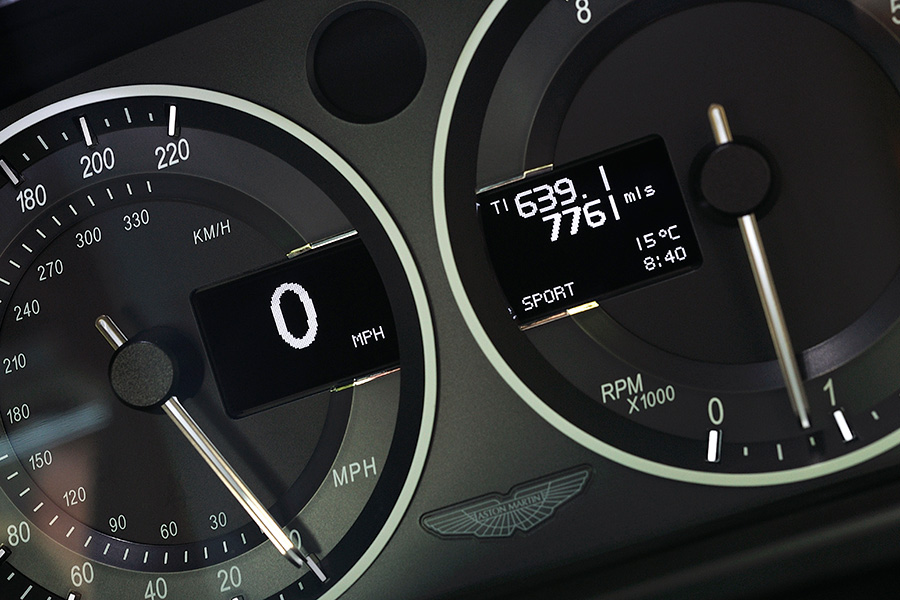
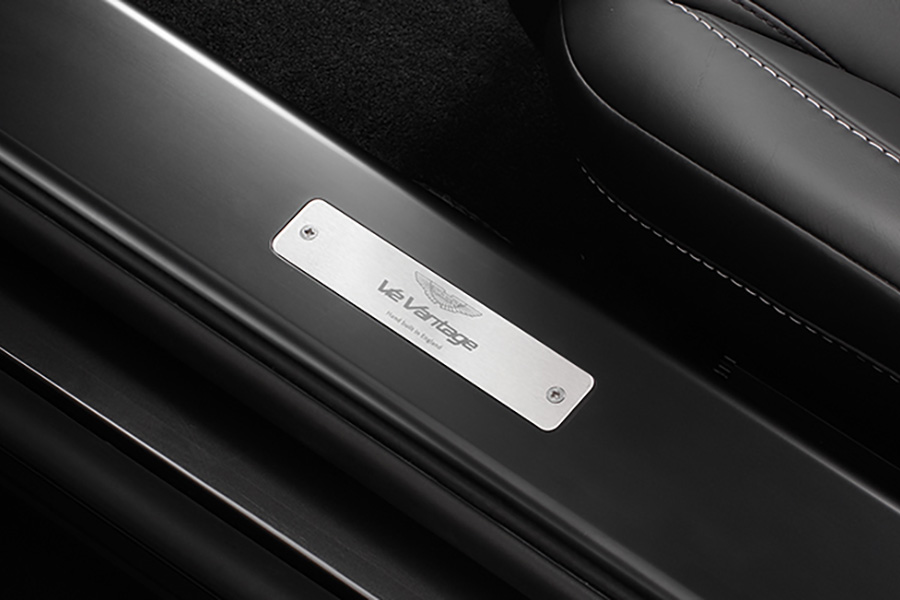
The swan doors gently angle upwards towards you as they swing open. A wide metal threshold with the Aston V12 plate greets you as you enter the car. The leather used come from Scottish beef cows which feels more supple than many other leathers. The Recaro seats provide just enough support to let you know it’s there. The dimensional speedometer and tachometer look like fine watch dials. The solid metal gear selector has a chunky heavy feel in the hand. Depressing the clutch feels neither heavy nor light. Inserting the “Emotional Control Unit” key into the center of the dash brings about a crescendoing roar of the engine. The entire process is an incredibly visceral experience.
Once you’ve situated yourself, ergonomically the controls are complicated. Buttons and dials abound on the earlier years of the car with the V12 S 7-speed receiving the updated dashboard. There are buttons for the trip meter, trip reset, radio, function selector, and probably a few more. Then there are knobs for the HVAC and radio controls. Finally a directional knob to guide you through the various menus. They all lead to you inevitably pressing and dialing multiple buttons and knobs before finding the right function. The navigation system is unusable, but that’s ok because getting lost gives you reason to stay in the car longer.
Aston Martin V12 Vantage Mechanical
This is one of the few cars where nothing really needs to be modified. The V12 engine making 510hp and 420 lb-ft of torque is incredibly refined and silky smooth. The noise at low RPMs is just loud enough to let you know there’s plenty more power on tap. Once you do hit the accelerator, you’ll be hurtled to 60 in around 4 seconds. More than the speed, the noise the engine makes at higher RPMs is just glorious. Not overly snarly like some Italian cars, but rather a refined muscular tone. Some opt for a more aggressive aftermarket exhaust but we think Aston got it just right.
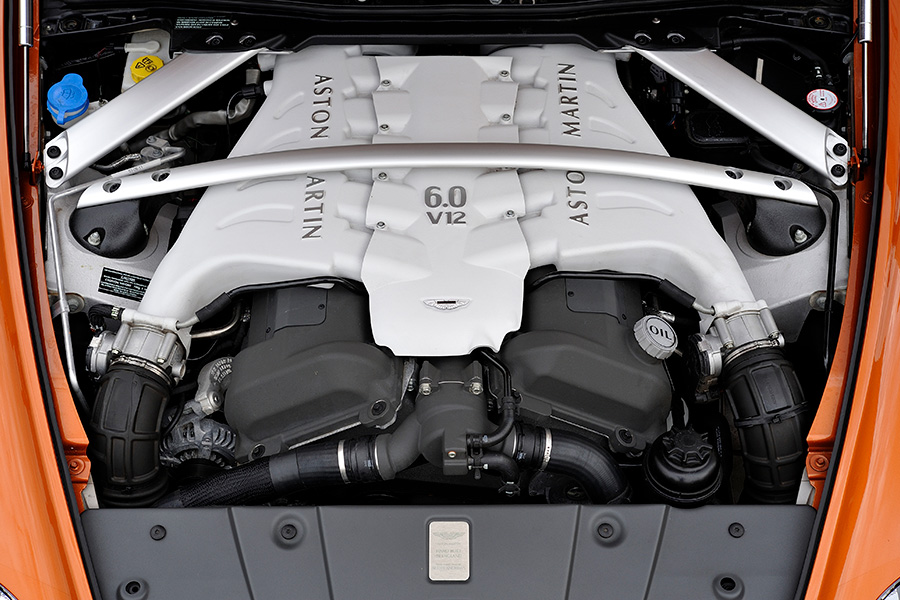
Shifting is handled through a 6-speed manual gearbox. Notching the gear into its respective groove isn’t quite as satisfying as some cars as the feeling is almost a muted click. But many enthusiasts and reviewers prefer the 6-speed over the dogleg 7-speed found on the later V12 Vantage S. The 7-speed forces tighter spacing which often times leads to missed shifts.
The AMG sourced V12 adds 220 pounds of weight over the V8. With the use of lightweight materials throughout the rest of the car, total weight increases by only 55 pounds. This is not a light car, but the double wishbone suspension front and rear keep the handling crisp and nimble. Massive ventilated carbon ceramic rotors – 15.7-inch front and 14.2-inch rear clamped by six-piston front and four-piston rear calipers handle braking duty and is standard for the V12 Vantage.
Aston Martin V12 Vantage Maintenance
All of the original V12 Vantages are now out of warranty. Parts prices for this car are not cheap, as they shouldn’t be for a limited production exotic. However prices aren’t astronomical and closer to Porsche than to Ferrari.
Finding a mechanic will probably be your biggest challenge as dealers and marque specialists aren’t as prevalent as they are for German or American cars. Members from forums like 6speedonline.com or astonmartinlife.com may be able to help locate one reasonably close to you.
Once you do find a mechanic, be prepared for a higher than average hourly rate. Aston Martin Vantages were marketed as a Porsche 911 alternative. Expect to spend in that ballpark if not a little higher. Fortunately thus far, dare I say, the V12 Vantage has proven to be a reliable car.
Aston Martin V12 Vantage Desirability
One can’t help but make the association of Aston Martin to Bond. James Bond. Aston Martin has been inextricably tied to the cinematic franchise for more than 50 years. There’s a legendary brand association with the suave elegance that 007 can exude to the all-business attitude when required. Women swooned, men wanted to be him. That cliché image is of a bygone era, but the positive associations to the brand are still powerful.
Combined with a storied history of racing under the ownership of David Brown and the legendary line of “DB” cars from the ‘50s and ‘60s, the Aston Martin built a reputation for desirable hand-built elegant performance cars..
The 1990s and early 2000s designs were a bit awkward and lost the classic proportions of earlier cars – perhaps due in part to Ford’s ownership. But with the release of the concept Vantage in 2003, the new design language was an instant success. While there are quite a few Vantages in market, the V12 manual is still a rare car. And with the recent announcement from CEO Tobias Moers about the discontinuation of all manuals, this car will certainly become more desirable as time passes.
Assessment
Aston Martin’s following has never been as rabid as say Ferrari’s. As such, prices of Astons have never commanded the same premium. More recently though, Aston has enjoyed a resurgence in prices for the DB lineup with the DB5 and DB6 now commanding mid to high six figure sums.
As these prices appreciate even further, collectors and enthusiasts will be looking at the next tiered Astons. The 2008-2012 DBS prices have leaped by almost 50% in 2020. And while the Vantage isn’t as storied a name plate as the DB, the car shares the same engine, interior, and platform – all in a tighter, lighter package.
The only evident factor preventing the V12 from appreciating like the DBS is the fact that so many of the V8 models exist. As people begin to realize the underpinnings are quite different, one would expect to see a sizable bump in price. For now these are still trading in the lower $100s
